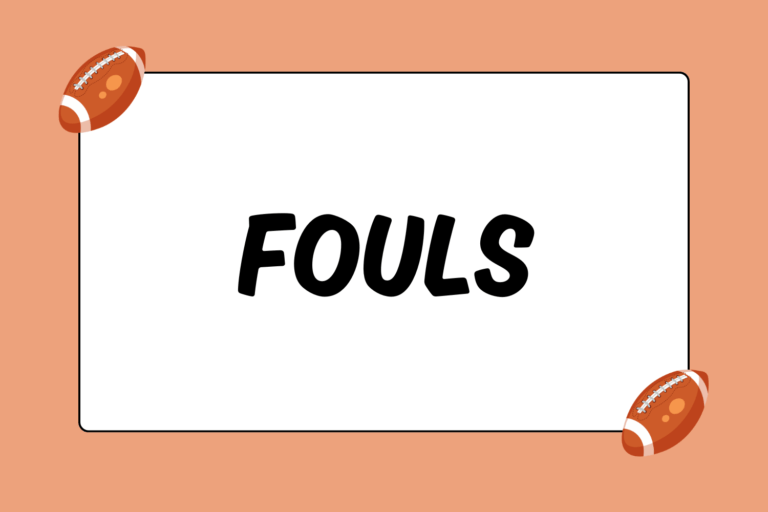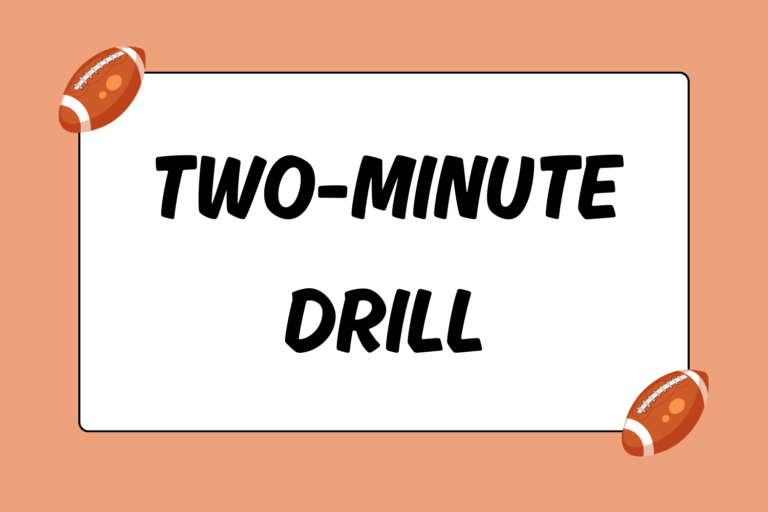Though ideally they don’t (or shouldn’t) happen very often, punting the football presents a unique situation. When punting, the offensive team voluntarily elects to give up possession of the ball in favor of a more strategically sound defensive position. As a result, punters are expected to be able to kick the ball with pinpoint accuracy, regardless of the spot on the field from which the kick takes place. On countless occasions, well-placed kicks have decided the outcome of football games, and coaches at all levels understand how crucial it is to have a good punter on the team. This guide describes the process of making a punt by breaking it down into three phases: Pre-snap stance; Approach & Catch; and Release & Kick.
Pre-snap Stance
Though the formation of the rest of the punting unit may vary depending on the situation, the punter’s alignment should stay exactly the same from one punt to the next:
- The punter should line up directly behind the long snapper, about 10 to 15 yards behind the line of scrimmage, so the ball gets snapped quickly and accurately.
- The shoulders should be parallel to the line of scrimmage.
- The feet should be about shoulder-width apart, with the non-punting foot approximately six inches in front of the punting foot.
- The arms should be up, with hands extended out, ready to catch the ball.
If the punting team is close to its own end zone, obviously the punter won’t line up quite so far back; if he catches the ball while standing out of bounds, a safety will be awarded to the other team. Common sense may affect how far back the punter lines up, but he should always be in a straight line directly behind the long snapper.
Approach & Catch
The play doesn’t actually start until the long snapper hikes the ball back to the punter. This is also the exact moment when the punter should begin his approach, although sometimes the punter will wait until he actually catches the ball before moving forward. This usually only happens if the snap is inaccurate. Here are the steps involved in approaching the ball:
Step 1: The First Move
Technically, the punter’s first step can be a half step, depending on the approach method he uses. However he starts the punting approach, the first full step will be made with the kicking foot. It should be a fairly straightforward step, although if the punter is trying to direct the kick to a certain spot, the first step may be angled in that direction. Also, the first step should happen about the same time that the punter catches the snap and positions the ball for punting.
Step 2: The Plant
The first step builds a bit of momentum and angles the punter in the direction he wants the ball to fly. The second step is to plant the non-kicking foot firmly in the ground, so the punter will have a solid balance base from which to kick.
Ideally, the entire punting sequence should only take about two seconds to complete from snap to kick, and only 0.8 seconds of that time should be spent on the approach. That’s why it’s crucial that the punter begin the approach as the ball is being snapped, instead of waiting until he catches it.
Hot Tip: Approach Options
Although the approach described here features only two steps, some punters use an approach method that includes a slight half-step of the non-punting foot to speed up the rest of the steps. Though the distance covered and the time it takes to make the approach are the same as the two-step approach, some punters find that the two-and-a-half-step approach makes it easier to move fluidly through the approach and make the punt.
Release & Kick

Also, it’s important to remember the very narrow window of time that the entire punting process should take. If the entire play takes about two seconds from snap to punt, and slightly less than half of that is the time it takes to get the ball to the punter, that leaves barely one full second to position the ball properly and kick it away. Just for a basis of comparison, it takes most people longer to take a normal breath than it does a punter to punt the ball.
Positioning the Ball
As the punter winds up for the kick, the ball should be held about waist-high over the kicking leg. There are a number of different parts involved with successfully readying the ball to be punted:
- The ball should be held so the laces are facing up, with the front tip angled slightly down and in towards the punter.
- While both hands will actually be touching the ball, only one of them really holds it; the other hand acts as a guide more than anything else.
- The arms should be mostly extended; keeping them too close to the body while releasing the ball will result in a high, short punt.
Aside from the approach, how the punter positions the ball just before the punt is a highly subjective habit. The important thing is to perform it in a way that will make it easy to kick the ball well.
Making the Punt
This is where the approach and ball positioning become crucial. By the time that plant foot is grounded and the punting foot is coiled back and ready to strike, the ball must be in perfect position for the release.
Step 1: The Drop
Holding the ball about waist high, it should be dropped just as the kicking foot swings forward and passes the plant foot. This too is pretty subjective, and should be modified according to each person’s approach. Ideally, the ball should be kicked at about hip height, not too far from the waist. The drop should not be very far; the greater the distance of the drop, the harder it is to maintain control over where you kick it. Click the image to the left to expand the image, which details how the punter should time the drop with the wind-up of the kicking leg.
Step 2: The Connection
As the kicking leg swings up, the very top of the kicking foot’s instep should make contact near the middle of the bottom section of the ball. The trajectory of the punt is directly affected by the spot on the ball where the kicking foot connects with it.
Step 3: The Follow-through
Once the kicking foot makes contact with the ball, it’s crucial that the leg follows through with the kicking motion; if the punt stops immediately as contact is made, the ball won’t go very far at all. The kicking leg should swing straight up and through the spot where contact was made with the ball. It’s also common for punters to help continue the momentum of the kick by adding a slight hop at the end of the kick. Though the hop actually comes after the ball is kicked, doing so makes it easier to carry the momentum through the entire kick. Click the image to the left to expand the image, which details the connection and follow-through of a punt.
Punting Has Its Place
Although realistically coaches want their offenses to score every time they go on the field, in reality, the odds of that happening are extremely low. Because of this, having a strong, accurate punter is extremely important. Hopefully, now you understand a little bit more about the steps involved in punting the ball, and perhaps you even have a bit more respect for how difficult a job it is!





